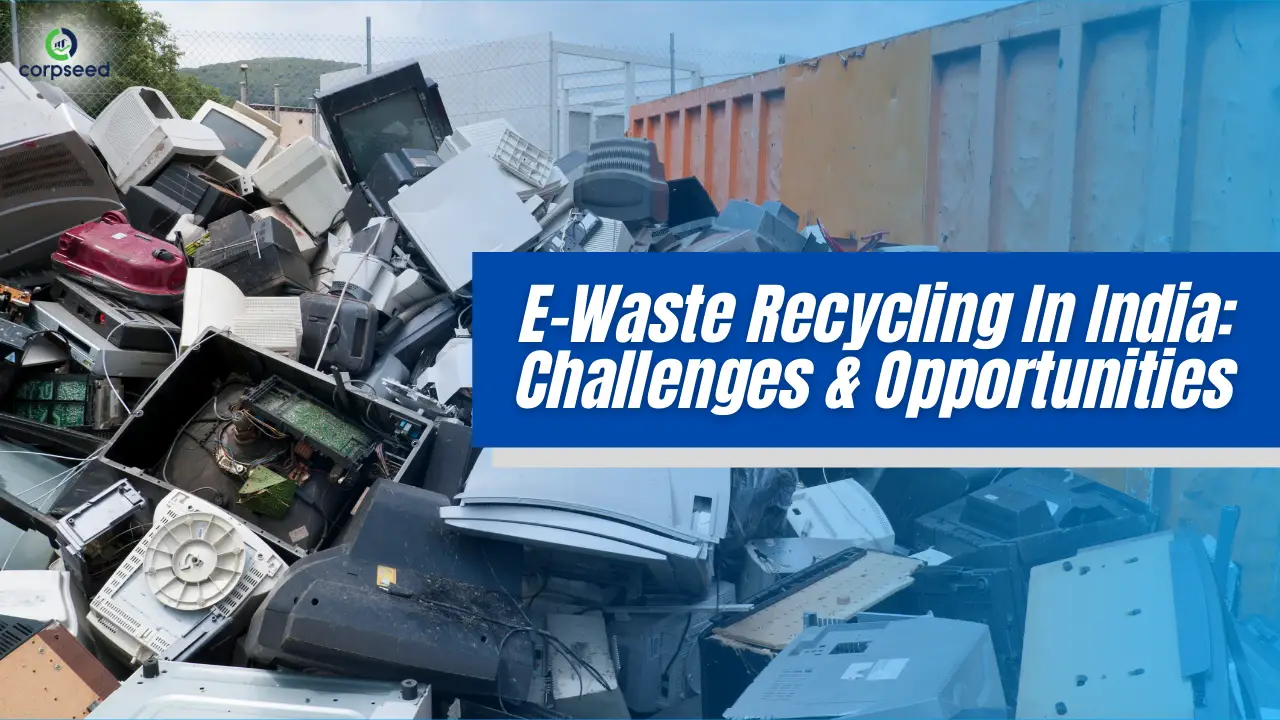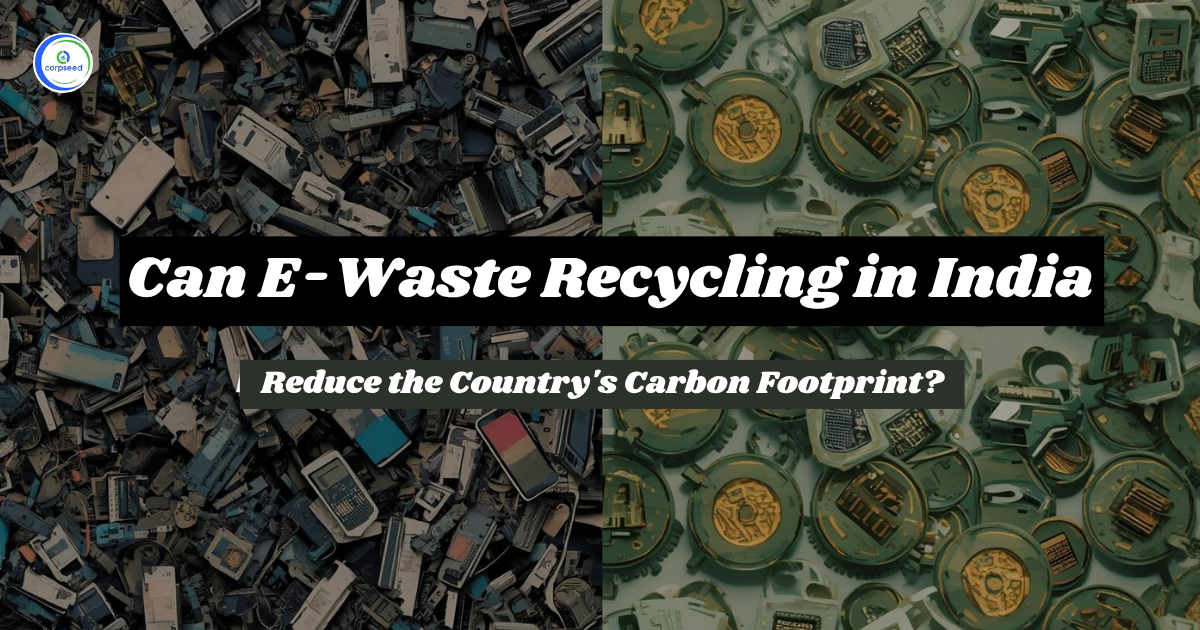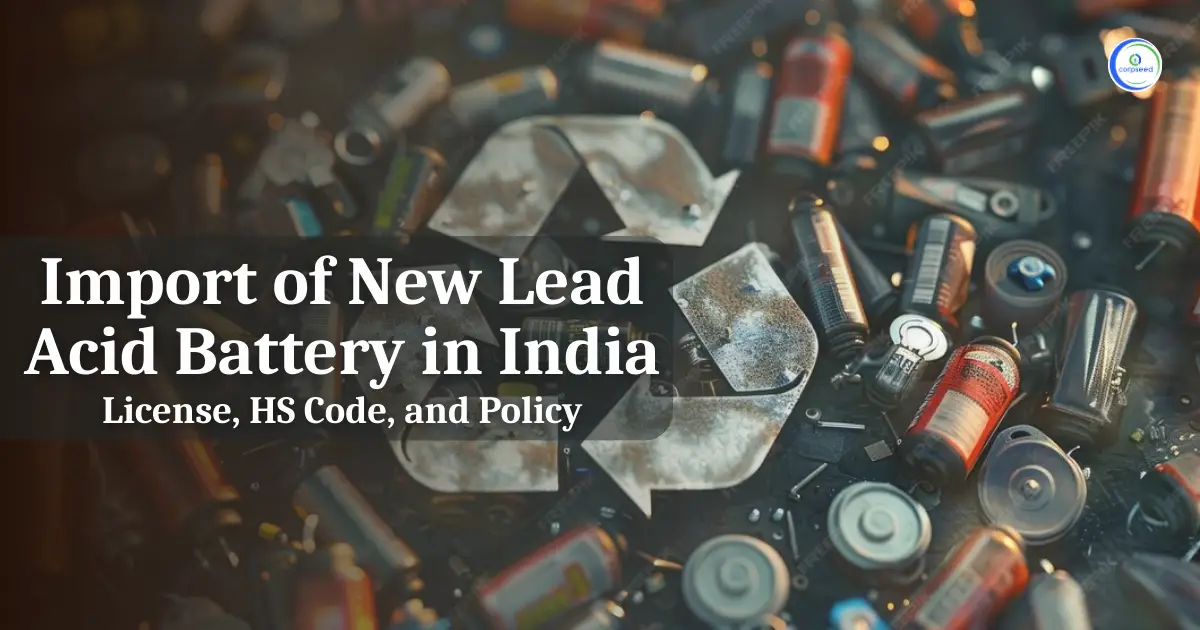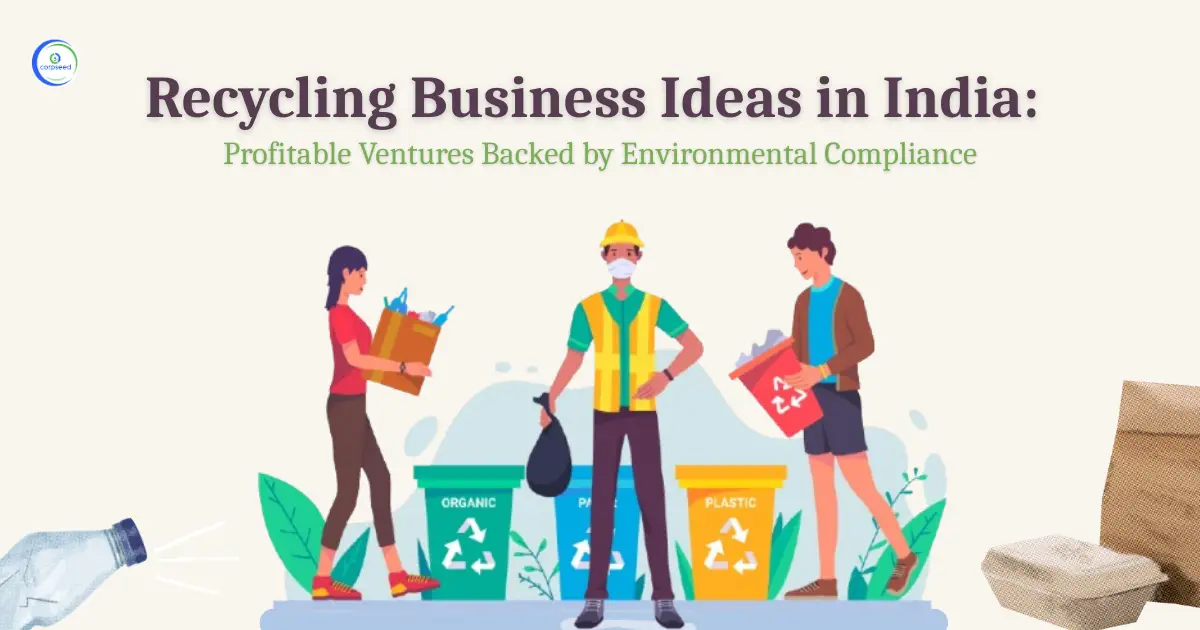Introduction: Electronic Waste Recycling
Electronic waste or e-waste is the electric and electronic equipment that no longer satisfies its original purpose or is of no value to the user anymore. These materials can either be any white goods that include refrigerators, washing machines, microwaves or brown goods such as radios, televisions, cell phones, and computers. E-waste is nowadays one of the fastest growing waste streams. People are crazed for new technology and in lieu of that most electronic products have lost their utility value either because of redundancy, replacement or breakage. Moreover, the information and technology revolution has increased the use of new electronic equipment, it has also produced growing volumes of obsolete products. India is a developing country and focuses on e-waste recycling capacity as India accounts for the third-largest e-waste producing country. E-waste is toxic in nature and is injurious to human health, the environment and India’s incapability in recycling e-waste to mine precious and critical materials is a loss to the country’s economy as well.
Table of Contents
--------------Blog Contact Form-------------
Challenges faced by E-recyclers for E-waste recycling
E-waste, as important a task as it sounds, it is not easy. This is something that has started in India in past decades and for a vast country like India, it is understandable for India to face certain challenges for the purpose of e-recycling. Challenges that include.
E-waste volume generated:
India ranks fifth in e-waste production at about 1.7 lakh tons per year. In the year 2019, India accounted for third-highest e-waste after China and U.S.A.
Involvement of Child Employment:
In India, about 4.5 lakh children working between the ages of 10 and 14 are considered to be involved in various E-waste activities and that without adequate protection in various premises and rehabilitated workplaces. Therefore, there is an urgent need to introduce effective legislation to prevent the entry of children into the E-waste market - its collection, classification, and distribution.
Unemployment Law:
There is no public information on most SPCBs / PCC websites. 15 of the 35 PCBs / 35 PCCs do not have E-waste related information on their websites, their point being a visible public connector. The basic E-waste Rules and guidelines are also needed to be uploaded. If there is no information on their website, especially the details of recycling personnel and E-waste collectors, residents and waste producers who are losing their waste and do not know how to fulfill their responsibility. Therefore, there is a failure in the effective implementation of the E-Management Waste Management Regulations.
Lack of infrastructure:
There is a huge gap between the current renewal and collection of sites and the amount of E-waste being generated. No collection and retrieval of items available. There is a shortage of recycling facilities.
Health risks:
E-waste contains more than 1,000 toxic substances, which pollute the soil and groundwater. Exposure can cause headaches, irritability, nausea, vomiting, and eye pain. Recyclers can suffer from liver, kidney, and emotional problems. Out of ignorance, they risked their lives and their environment.
Lack of incentive programs:
No clear guidelines exist for the informal sector to manage E-waste. And no incentives have been raised to lure people involved in the legal process of E-waste management. Conditions in the field of informal reform are much worse than in the formal sector. There are no schemes to encourage producers to do something to manage e-waste.
Negative awareness and empathy:
Limited access and notification regarding disposal, after determining the expiration date. And only 2% of people think about the impact on the environment while discarding their old electrical and electronic equipment.
Importation of E-waste:
Importation of waste equipment falling into India - 80 percent of E-waste in developed countries for recycling is exported to developing countries such as India, China, Ghana, and Nigeria.
Decentralization involved:
Lack of co-operation between the various authorities responsible for the management and disposal of such waste includes non-municipal involvement.
Security results:
Lifetime computers often contain sensitive personal information and bank account information which, if not removed, leaves room for fraud.
High cost of setting up re-use space:
In addition, the study also states that renewable technology projects (including steel and non-ferrous metals refining) are at a major economic disadvantage compared to basic process activities and are generally not economically viable. Legal recycling companies in India apart from others are limited to pre-processing of e-waste materials, where crushed waste is exported to mines outside India. The formal sectors in India will still need to be utilized to use state-of-the-art waste recycling technology due to garbage collection problems and in part because of the difficulty of making a profit with high investment in high-tech and expensive technology.
Lack of research:
Government should encourage research into the development and standards of hazardous waste management, environmental monitoring, and hazardous waste management.
There is no way to end the generation of e-waste. Only we can do is find and adapt more convenient ways to recycle such waste. Like rights and duties go hand in hand, challenges and opportunities go hand in hand. Everything that is a challenge for the country at large, becomes an area of opportunity as well, of course, when the solutions are provided for the challenge. There is no doubt that E-waste has increased in the past decades and these numbers will go on increasing in the coming times, which opens up a huge area of opportunities for the recyclers of e-waste. Electronic and equipments are designed in such a way that they would be used for 3-4 years only and then will have to be re-cycled. And the statics themselves shows that India is the 3rd largest country that generate e-waste and this would increase in the coming times. Some suggested solution to the existing problems related to e-waste are:
- Trained Managers: Employees wants that a reputable labour team supplier shall briefly explain the expectation of the job and shall then manage the workers. This would make the employees happy, so that they do a good job and keep their job. This would help to the large extent in the problem of employee retention as well.
- Domestic legal framework to address to the gaps in import of e-waste. And ensure that the framework address the issue of e-waste imports for recycling and re-use. A certain need to address safe disposal of domestic waste is also a requisite.
- Recycling shall be tied up with take-back product.
- Investments that shall attract the re-cycling sector.
- Linking of activities of informal sector with formal sector activities.
- Promotion of technologies for recycling, like adequate ESM technology. And incorporation of precautionary principles.
- Collection Depots: In line with the example of British Columbia, the actual flow of old electronic items begins with authorized collection depots. Enter contracts in more than 100 places in B.C. receiving authorized items, where they are usually tiled in type (computers, televisions, etc.) and folded, to be sent to the assembly centre. Most of the B.C. collection centers also serve as bottles and beverages that can bring back centers, generating more business than the e-scrap side of work.
- Consolidation Points: Consolidation points are a common practice in the logistics world. They allow for LTL (less than load) to be integrated into complete loads to provide efficient transport efficiency. In B.C. model, the next stop behind the collection centre is the assembly centre. For a company that is interested in this type of business integration, port departments to facilitate the loading and unloading of truck handling equipment, and a secure storage area for bulk products are required. For some authorities, opportunities for integration are also available.
- Basic recycling: In recycling materials, a recycler with more than 100 employees at its 25,000-square-foot facility, incoming debris is removed from pallets and recycled by equipment operators in the workplace and packaged in the appropriate pallet bin, including sectors such as circuit boards, metal, plastic and glass. For large companies, there are considerations of reputation and credit as well as the need to protect corporate confidential information.
- Secondary Process: Clean items are then shipped to other operations for further processing. Some of these materials, such as copper, may generate revenue for the recycling of raw materials, while other materials, such as glass, that will be reused will pay for better processing. Another way to continue the release of material is the use of cutting machines, which separate the electrical debris to facilitate the release of the material. The extraction is aided by a number of filtering technologies including magnets, vibrations, optical devices and eddy currents.
E-waste recycling is an important issue and must be dealt with caution and on urgent basis. And Government of the country shall provide the recyclers with adequate technologies and solution to the challenges faced by them in the process of re-cycling.
This portion of the site is for informational purposes only. The content is not legal advice. The statements and opinions are the expression of author, not corpseed, and have not been evaluated by corpseed for accuracy, completeness, or changes in the law.
BOOK A FREE CONSULTATION
Get help from an experienced legal adviser. Schedule your consultation at a time that works for you and it's absolutely FREE.








.webp)
